To enter the reserve you need a ticket: 8 and 4 zlotys (normal/reduced). You also need a licensed guide (check the list of national park guides), without whom the park staff will not let you into the forest.

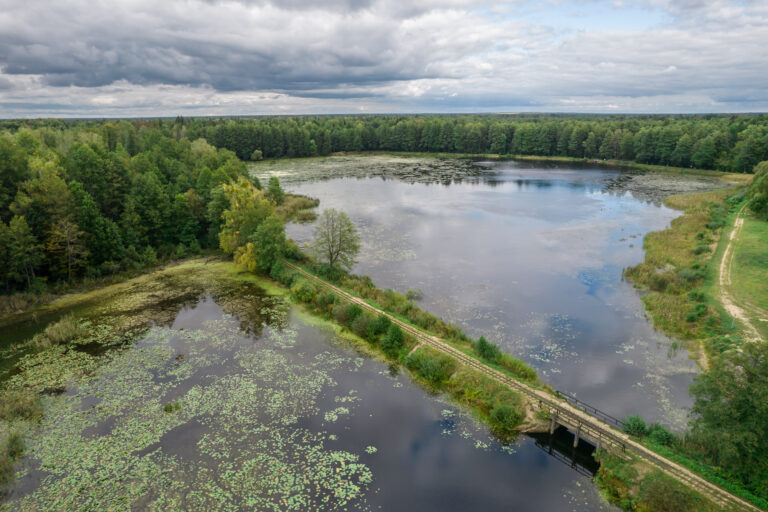
Bialowieza Forest, protected by Bialowieza National Park, is Poland’s only natural attraction on the UNESCO World Heritage List. The village of Bialowieza lies on the border of Poland and Belarus and is surrounded by one of the oldest forests in Europe. You can rest in nature and go hiking or biking in the ancient forests of Bialowieza Forest. This forest is home to the world’s largest free-ranging bison population.
In the Bialowieza area, you have a selection of different attractions and things to do. You can walk along educational paths through the Bialowieza Forest, explore the wooden architecture of Podlasie District, see colourful Orthodox churches and check out local handicrafts.
The terrain is suitable for cycling, and the Narewka River is a good place for kayaking. Let’s check the 15 best places to see & things to do in the Bialowieza Forest and Bialowieza National Park.
BIAŁOWIEŻA FOREST IS FULL OF BEAUTIFUL GEMS
Looking for exciting places to see in the Białowieża Forest & National Park? Want to explore one of Poland’s most beautiful region?
Get a map of 110 places to see & things to do in Białowieża. Works on phone & computer (Google Maps).
pol.: Puszcza Białowieska
Bialowieza Forest is a huge area – it covers 150,000 hectares, of which 63,000 hectares lie on the Polish side of the border. The need to protect this place was already seen by Polish kings, who treated the forest as their property and forbade access to it without their personal permission. The kings were selfish, but thanks to this, we can enjoy the original forests of Bialowieza today.

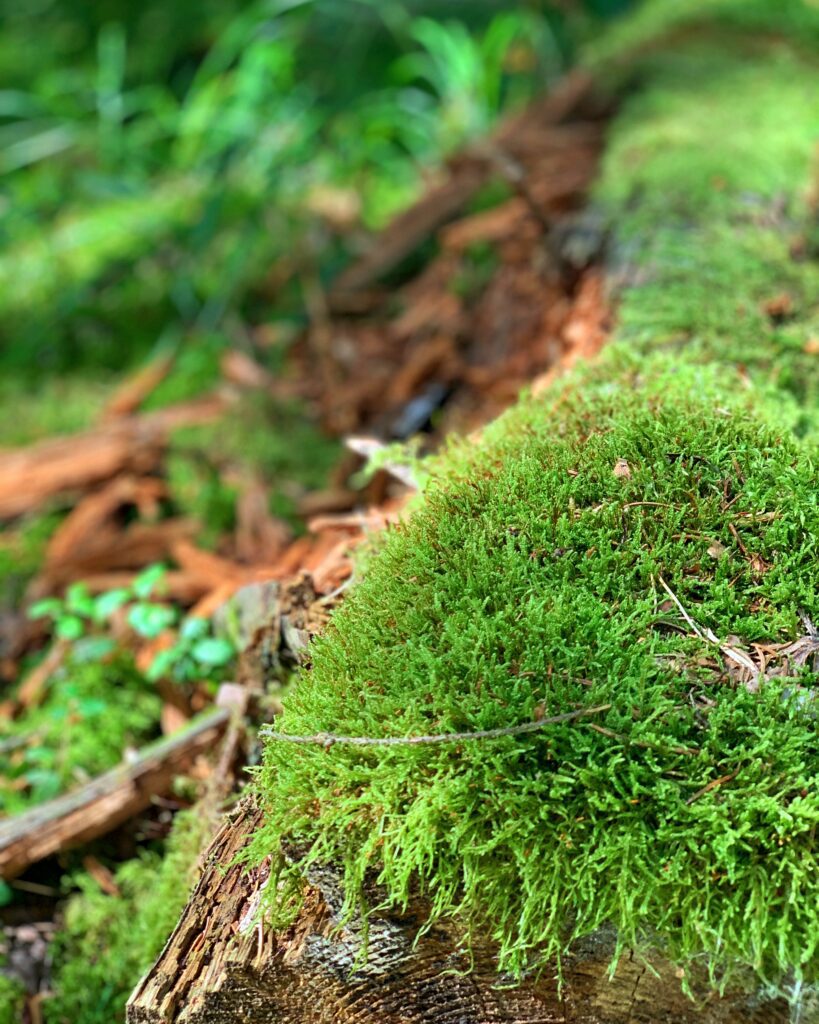
Established in 1932, Bialowieza National Park was one of Poland’s first two national parks (along with the Pieniny National Park). There are quite a few educational trails along the park, but I would recommend starting with my favourites:

Entrance to the themed paths is free. Remember to behave quietly – you are, after all, in a priceless forest with thousands of species of plants and animals. The best way to explore these areas is in silence, contemplating the pristine nature.
Get ready for travel to Poland & Białowieża
1. Accommodation: book early & save money (stay in Hajnówka or Białowieża).
2. Currency exchange: you can use your bank card, but much cheaper is the free Curve card.
3. Rent a car in Białostok or Warsaw: you’ll be flexible & see more in less time.
4. Map of Mazury sights: explore better with a map of the best attractions on your phone.
pol: Białowieskie Drezyny Rowerowe & Rezerwat Przyrody Podolany
It is quite possible that you have never had the opportunity to drive such a vehicle before – so your first time will be in Bialowieza itself! The history of the railroad line itself is very interesting. When it became known that the tsar would appear in Bialowieza, it was necessary to quickly build a railroad line from Hajnówka to Bialowieza through the Bialowieza Forest area.
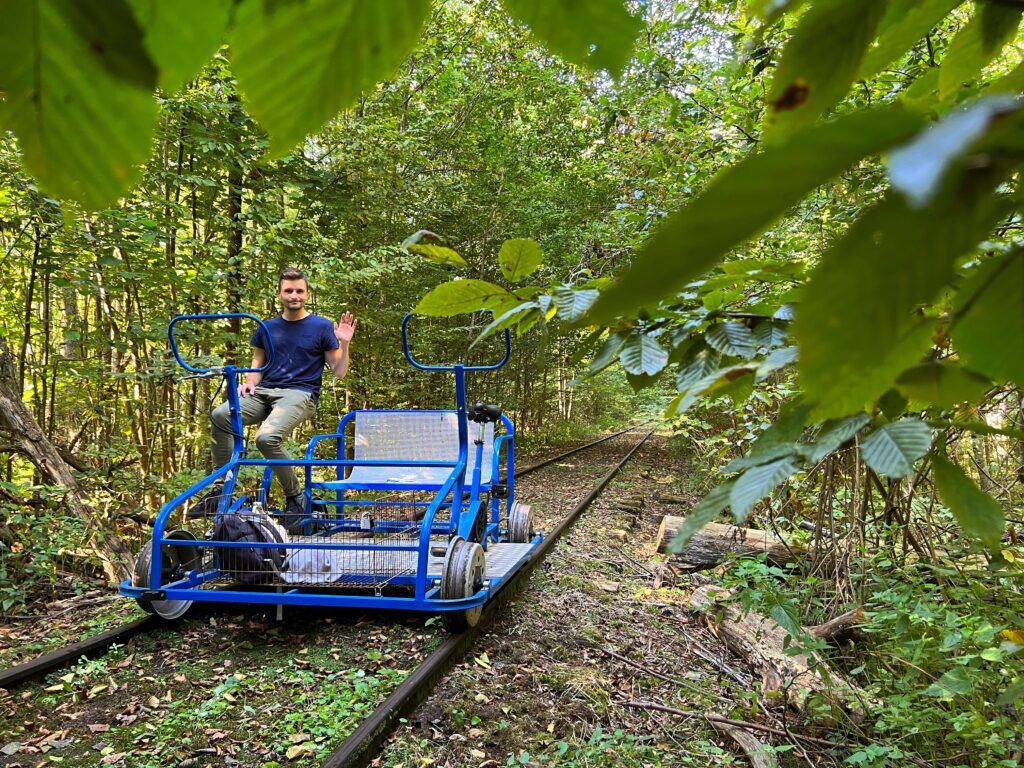
Train traffic was eliminated in the 1990s, and bicycle draisine appeared on the tracks. The route of the draisine leads through a green corridor marked by the railroad, surrounded by dense forest. The draisine tour does not require much fitness, and you can choose between two routes:

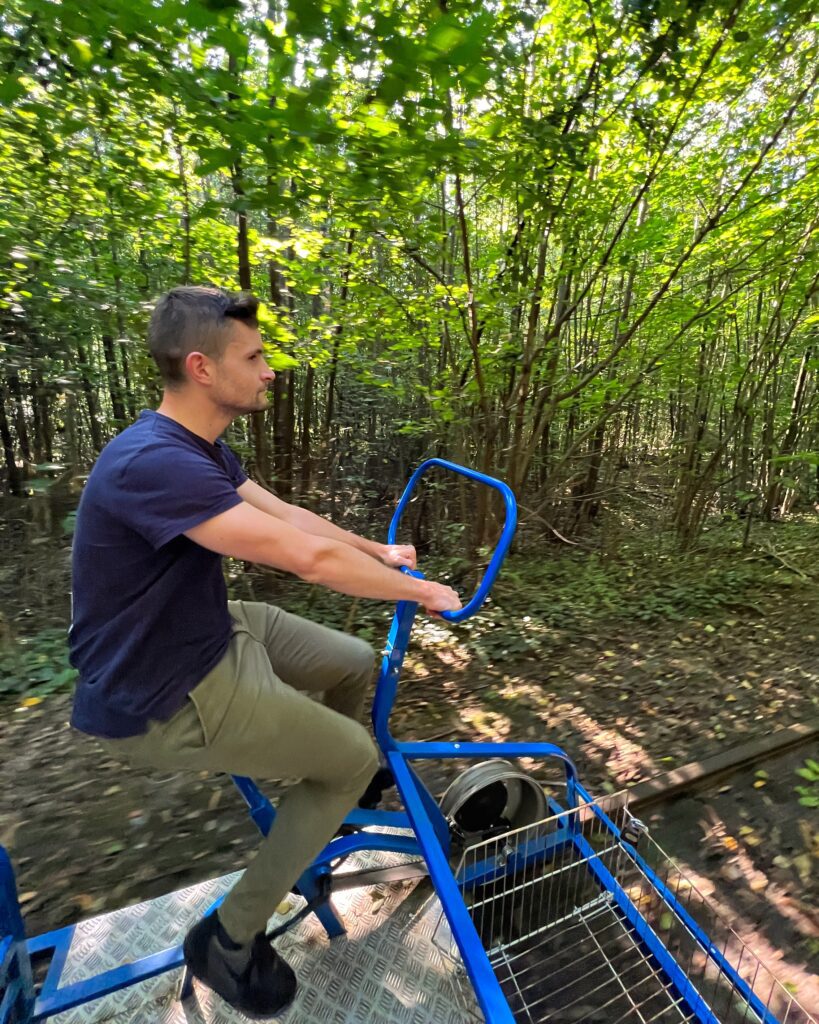
You can travel in a total of five people – four adults and one child. After the adventure on the draisine, I recommend visiting the beautifully decorated Restauracja Carska. If you’re not hungry, order a tea with plum jam to replenish your energy after the draisine exertion.
You can take an organised trip to Bialowieza and the national park if you don’t want to plan the trip yourself. You can also take the opportunity to visit Bialystok and other attractions of Podlasie – a region of Poland located in the east.
pol: Kraina Otwartych Okiennic
Kraina Otwartych Okiennic (The Land of Open Shutters) is a trail leading through villages in the Narew Valley arranged in a triangle – Puchły, Soce and Trześcianka. Usually, historic wooden houses are seen in open-air museums, but these buildings are still alive, hosting successive generations within their walls.
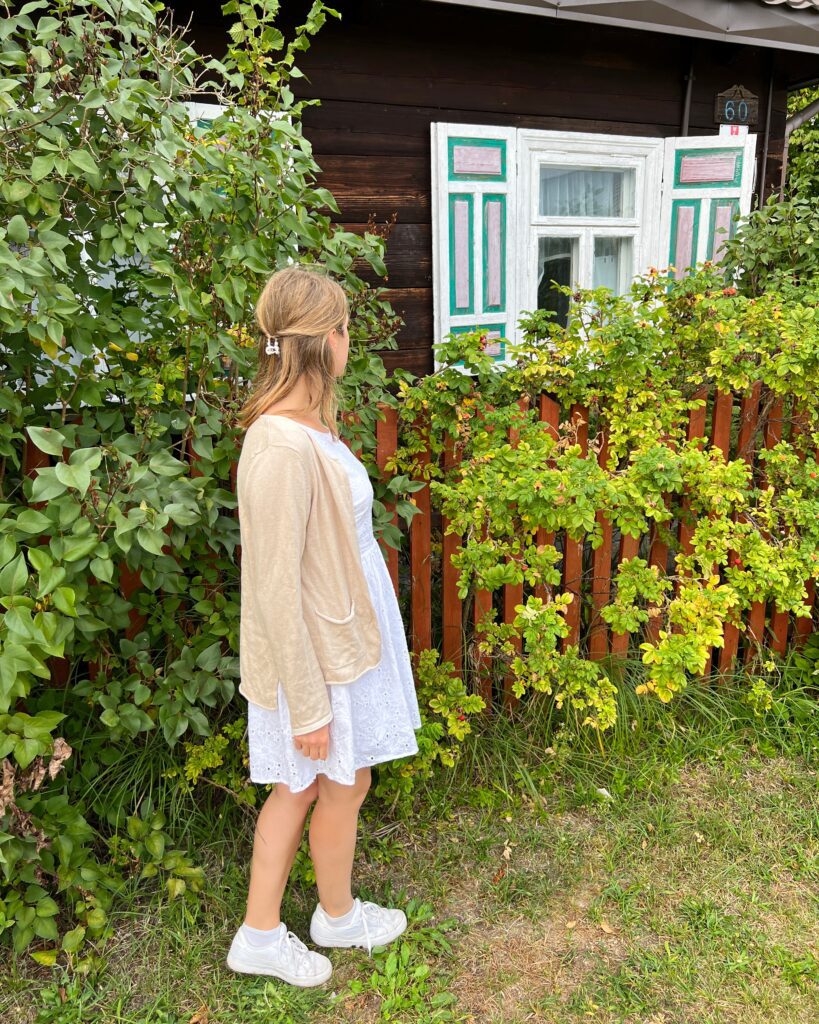
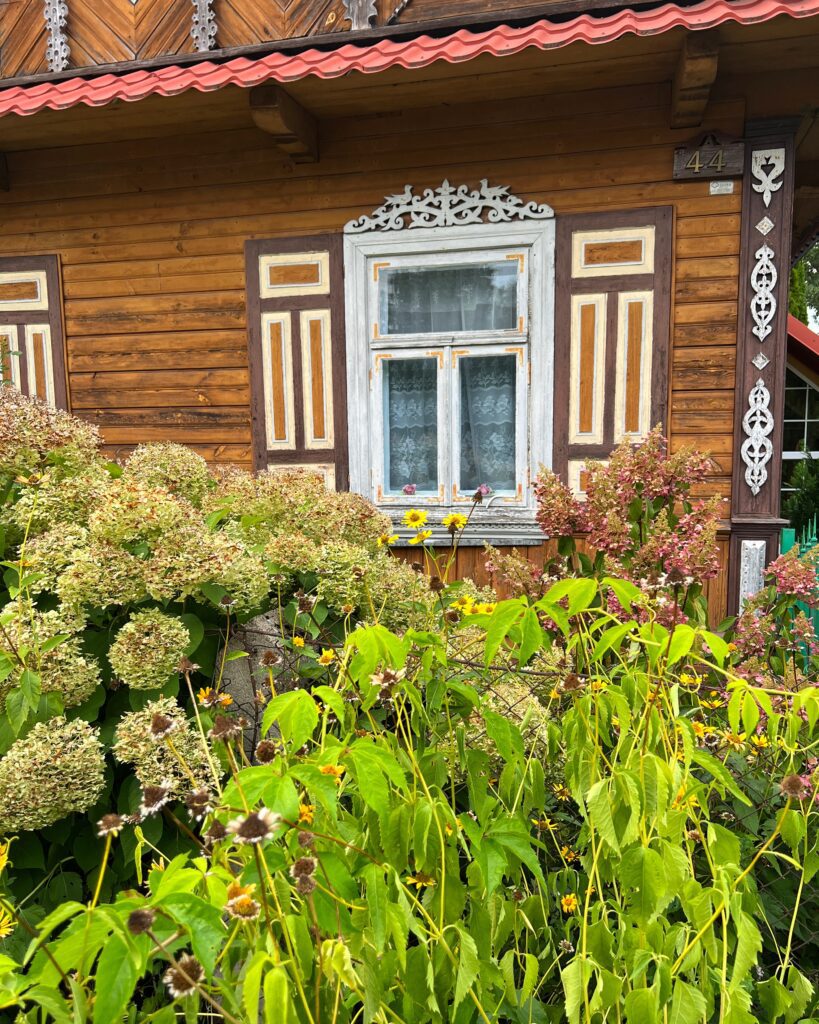
You will be struck not only by the colourful shutters but also by the woodcarving decorations on the corners of the cottages and the gables of the roofs. The surroundings of the houses look charming because they are overgrown with lush vegetation.
I advise you to park your car in the centre of each village and walk through the main streets, looking for more houses with different decorations. The flowers correspond well with the floral motifs that appear on the wooden decorations.


When in Trześcianka, after seeing the wooden houses, take a moment to visit the Church of Archangel Michael (pol. Cerkiew św. Michała Anioła w Trześciance), built in 1867. If you hit upon an Orthodox clergyman, you might be able to take a look inside too.
Part of the Bialowieza Forest is as pristine as you can imagine. No people are allowed in, and tours are only possible in small groups, guided by an experienced guide who knows how not to disturb the surrounding nature. You will find the entrance to the reserve at the end of Paczoskiego Street. Allow about 3 hours for the tour.
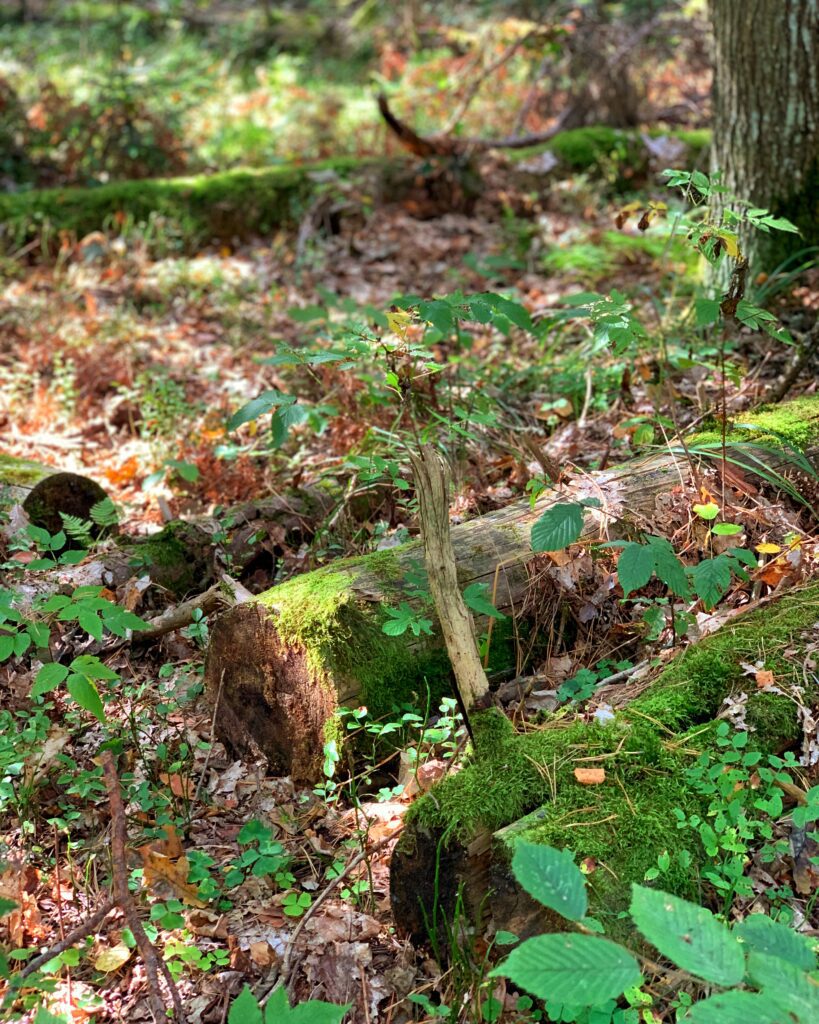

To enter the reserve you need a ticket: 8 and 4 zlotys (normal/reduced). You also need a licensed guide (check the list of national park guides), without whom the park staff will not let you into the forest.
This is the oldest piece of forest in Europe with very rare species that require, for example, thick, dead tree trunks to live. The strict reserve is governed by its own laws resulting from the customs of nature. Foresters do not interfere with the forest, leaving any fallen trees as they fell to the ground. This gives species a chance to live that would not make it otherwise.
pol: Rezerwat Pokazowy Żubrów
Bisons are one of the biggest attractions of the Bialowieza Forest. However, there is a good chance that you will not have the opportunity to see them in their natural habitat. The population on both sides of the border in the Bialowieza Forest is only about 1,000 individuals, so hitting them only seems easy. We sneaked around and observed the forest every day, but did not manage to see any bison.
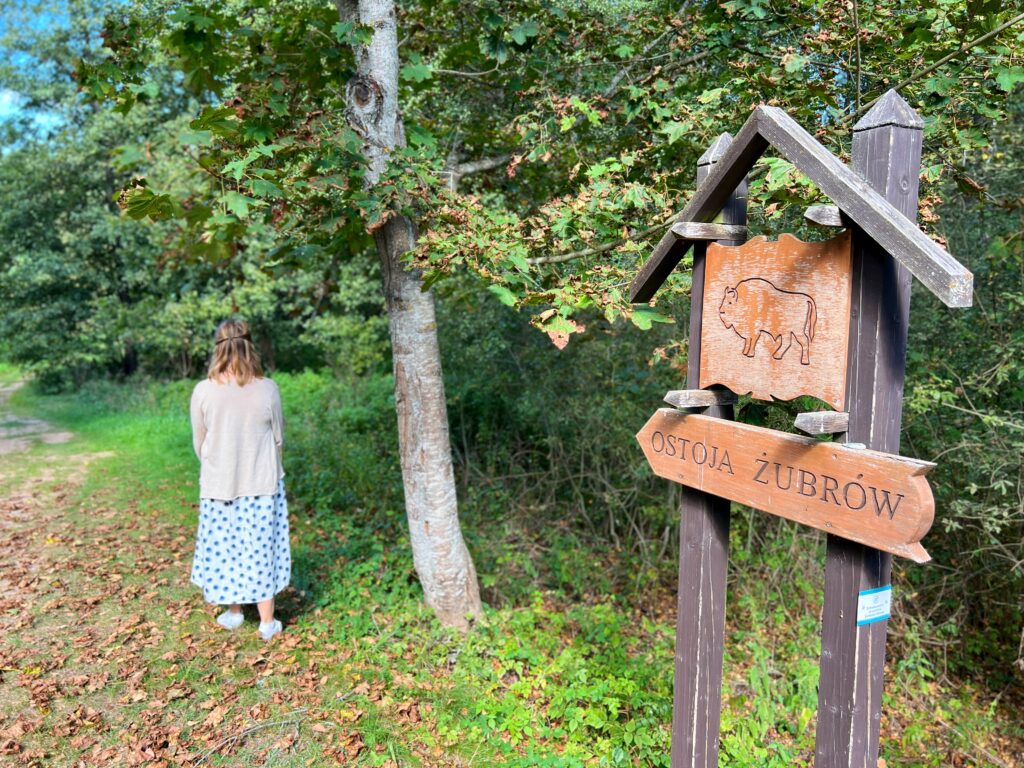
To enter the Bison Reserve, you need to buy a ticket. You can buy tickets online or on the spot at a ticket machine or office. Check the opening hours on the website.
However, locals told us that bison sometimes appear in the streets of Bialowieza and various corners of the Bialowieza Forest. You are more certain to see a bison when you visit the bison reserve of the Białowieża National Park. You can get there by car, bike, or you can walk along the educational path called Żebra Żubra (Żubr’s Ribs). In addition to the bison enclosure, you can see elk, wolves or wild boar.
EXCHANGE CURRENCIES CHEAPER
Exchange in exchange offices is expensive and inconvenient.
I use the Curve card and exchange currencies at the cheapest possible interbank rate. Using the card is free, and you will receive a bonus after first transaction.
Interesting hiking and cycling trails lead through the northern part of the national park. You will come across bison sanctuaries here – areas where free-living bison appear more often, as they are attracted by fresh hay. There is no certainty of seeing a bison – and it is a pleasant thrill. 😉


I recommend setting aside time to walk at least one of the hiking trails in this part of the park. You can walk here without a guide and don’t need to buy entrance tickets. The forest car parks are free. Remember to leave some tidiness behind (and preferably take your rubbish with you, so as not to add to the work of the services emptying the park bins).
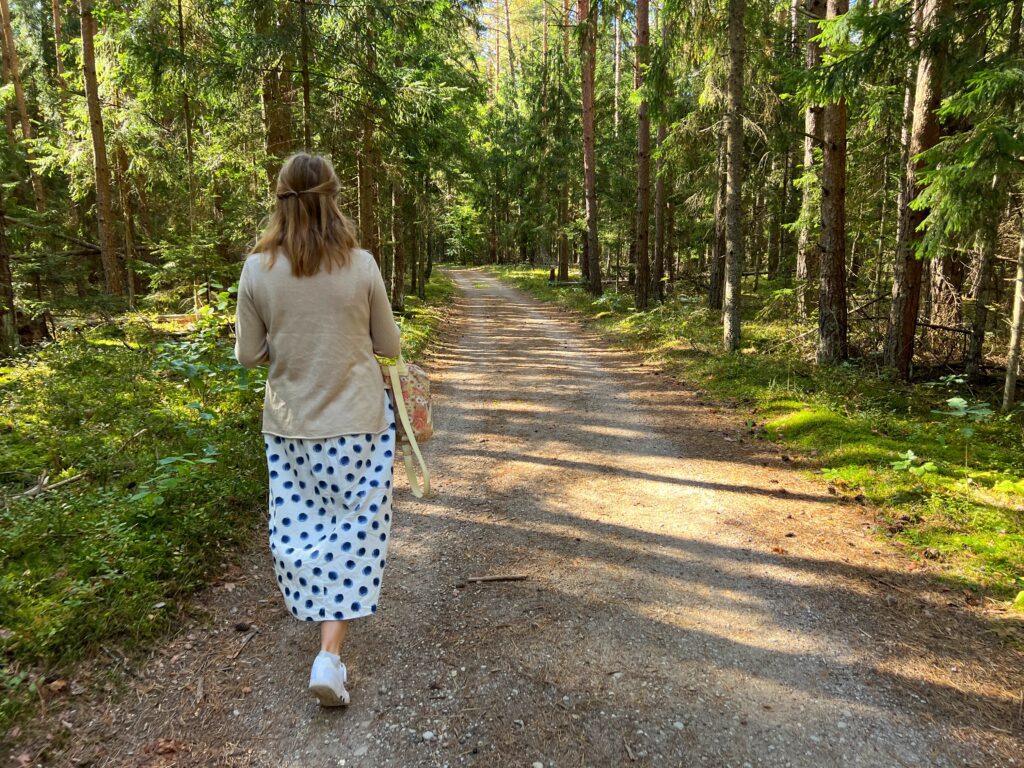
The Bialowieza Forest is crisscrossed by a disused railway line from Hajnówka to Bialowieza dating back to the time of the Tsar, but this is not the only steel track to be found in the area. In the past, a large amount of logging was carried out in the area, and the wood obtained had to be transported by something. A network of narrow-gauge railways began to be built, which did not help to protect the forest but allowed logging to increase even further.
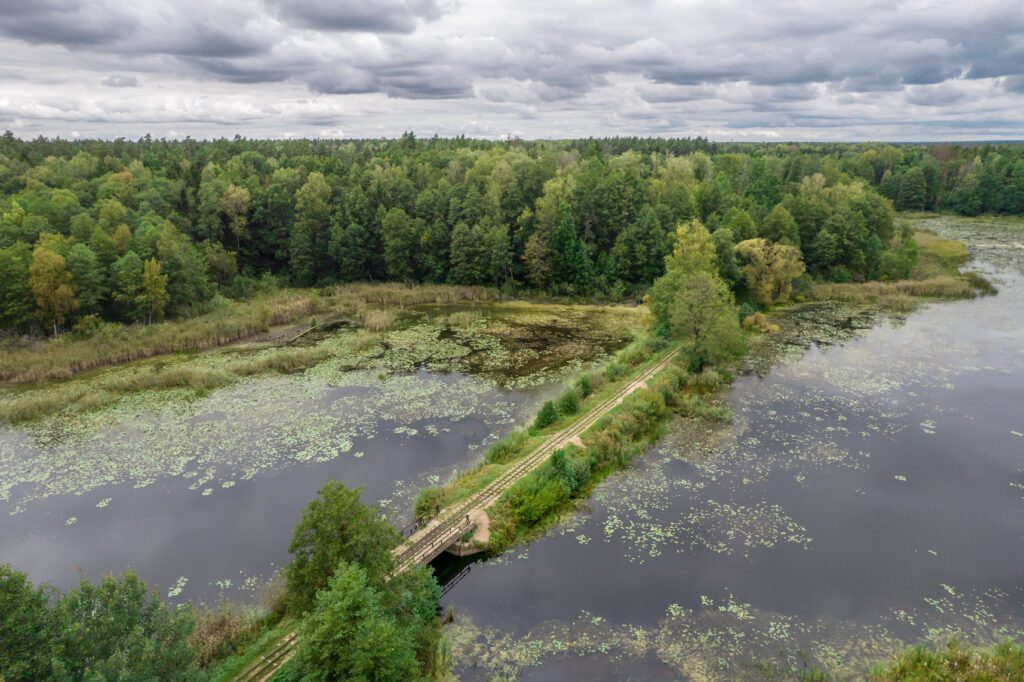
Much of the rail network of this railway has not survived to modern times. Occasionally, wandering through the forest, you will spot old railway tracks still overgrown with grass. Trains still run on the Hajnówka – Topiło section during the tourist season. You can set off from Hajnówka on a narrow-gauge forest railway that will take you through the heart of the Bialowieza Forest.
You can check the days and times of the narrow-gauge railway on the website of the Lasy Państwowe (State Forests). Trains usually run from the end of April to the end of September, only on certain days of the week.
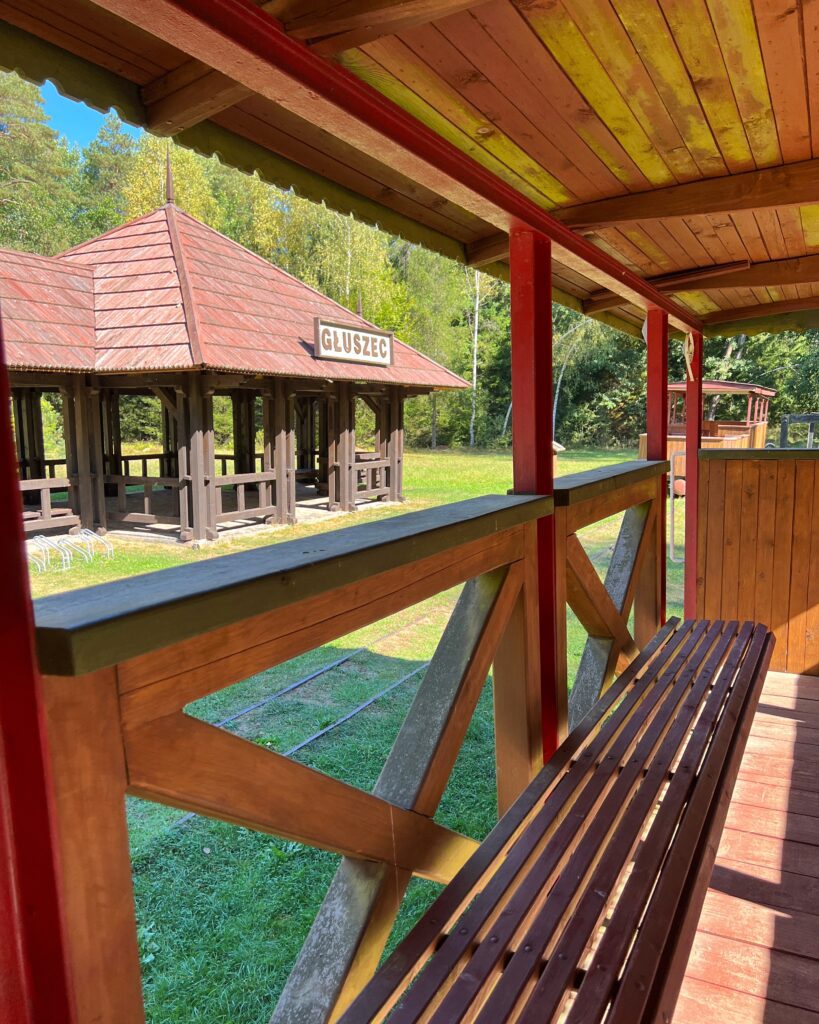

The narrow-gauge railway will take you to the village of Topiło, which was established after World War I as a settlement for forestry workers. Surrounded by forest, Topiło Lake is beautiful, but its picturesqueness is further enhanced by the narrow-gauge railway track, which runs along a narrow causeway across Topiło Lake. The excursion takes about three hours – an hour’s drive each way, plus an hour to rest at the Topiło station.
The Narewka is a tranquil river that begins in the swamps of the Wild Nikor (Dziki Nikor) on the Belarusian side. It flows unhurriedly through the Bialowieza Forest, providing a habitat for hundreds of species of plants and animals, and then flows into the Narew River. Among these animals… sometimes canoes also pass through. 😉
The kayak tourism centre is in the village of Narewka, where you will find a kayak stand renting kayaks and lots of other tourist equipment. You can take two routes – from Narewka to Lewków Stary or Kordon. You can also rent bicycles, Nordic walking poles, water bikes and, in winter, cross-country skiing trails. Next to it is a camping site and a place to park a camper, so there is a tourist spot.
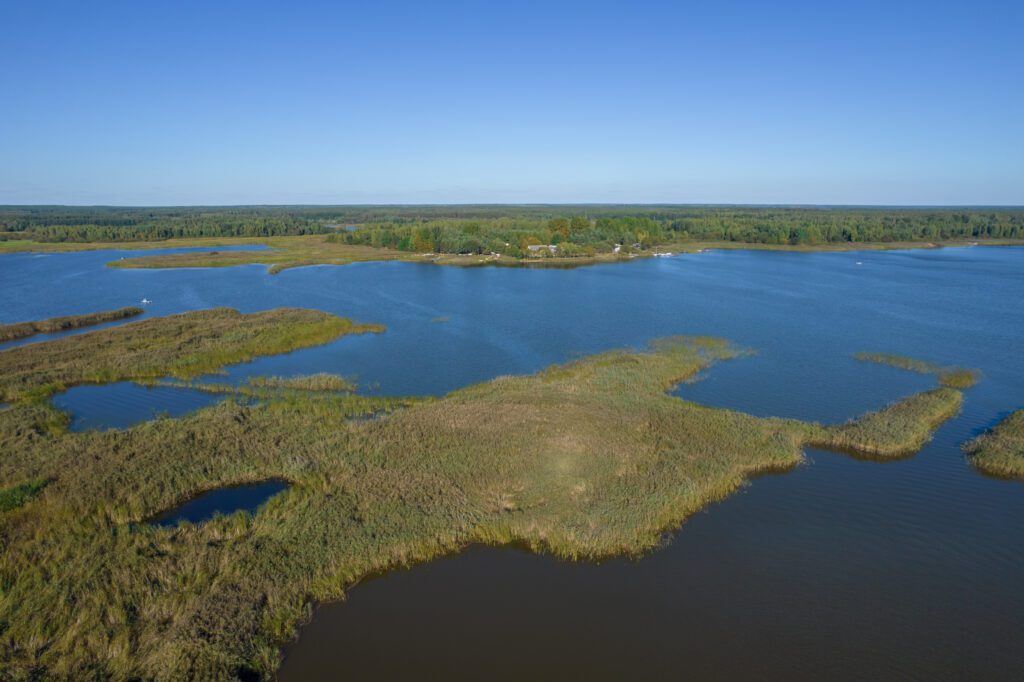
You will find details of canoe and other equipment at Stanica Kajakowa on the Narewka website. The price includes picking up your canoe when you reach the end of your canoeing trip and returning to the starting point.
The Narewka River is a good option for those without much kayak experience, as it flows slowly and has no technically difficult sections. We picked up the basics of navigation and safety minutes before our first trip. I recommend a one-day trip to start with, but local companies also offer longer, multi-day trips with overnight stays in tents or private accommodation.
My first encounter with the wooden Orthodox churches of Podlasie, distinguished by their bright colours, was a surprising but pleasant experience. The churches are magical not only from the outside – rich decorations and ancient icons await inside.
Also interesting is the language of the liturgy – Old Church Slavonic, which is considered dead in philological studies. I recommend looking inside the Orthodox church during the service to listen to this melodious language.
I have selected a few distinctive (at least in my experience) wooden Orthodox churches to look at. You will be able to see them from the outside – you can only go inside if you are lucky enough to have a batiuszka priest nearby:

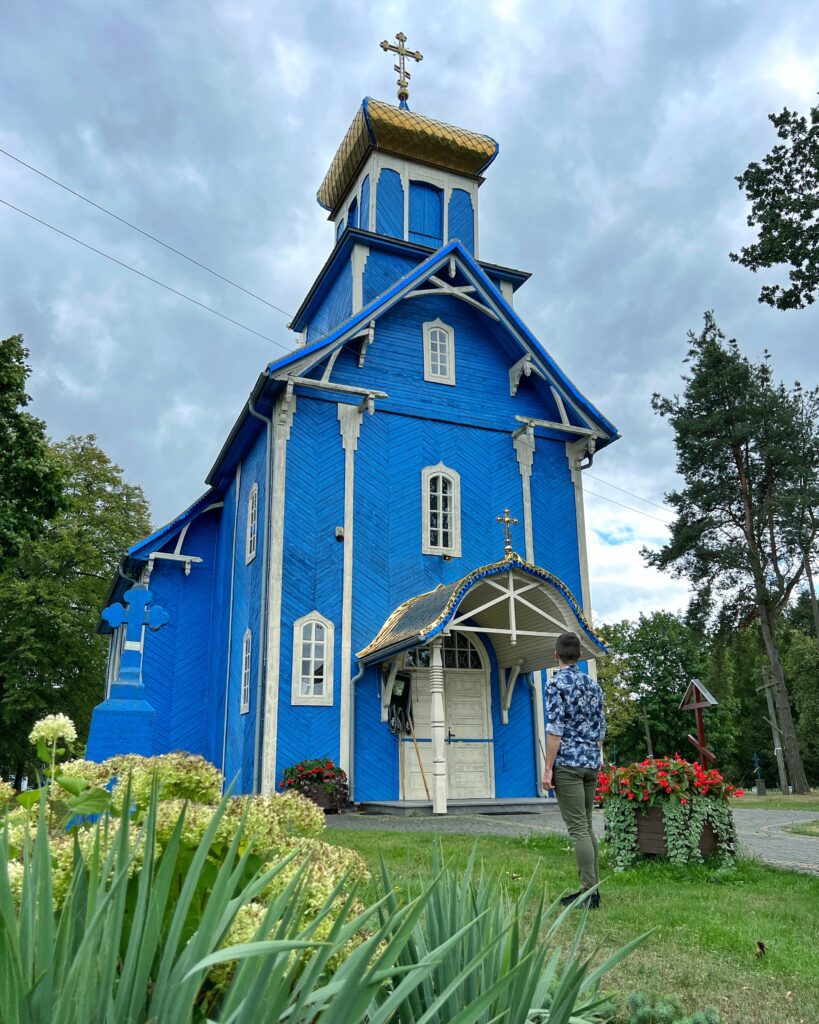
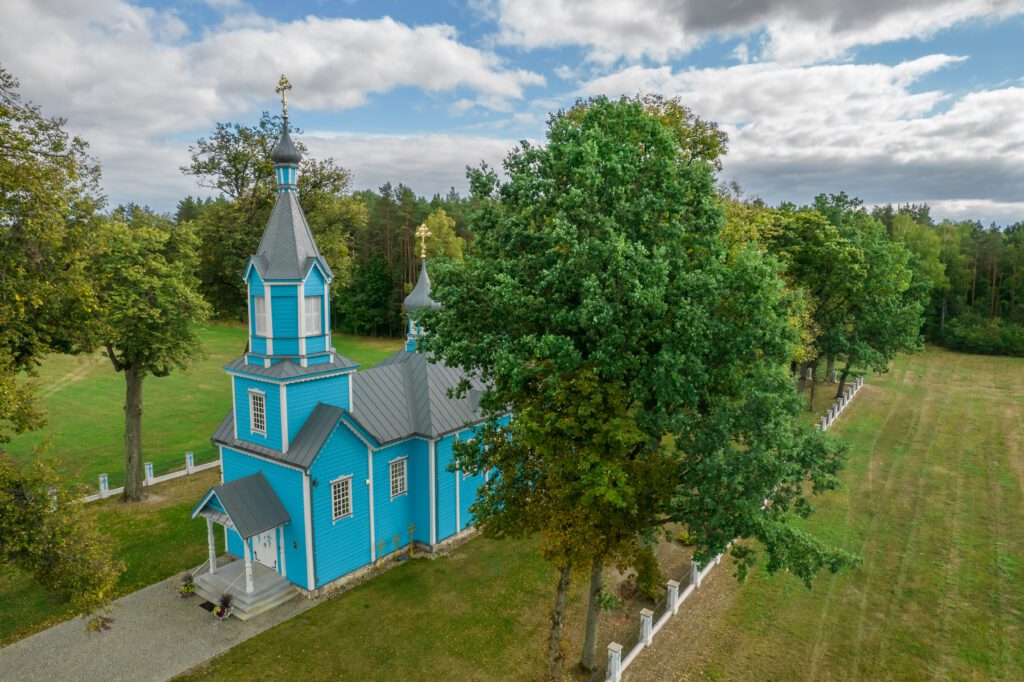
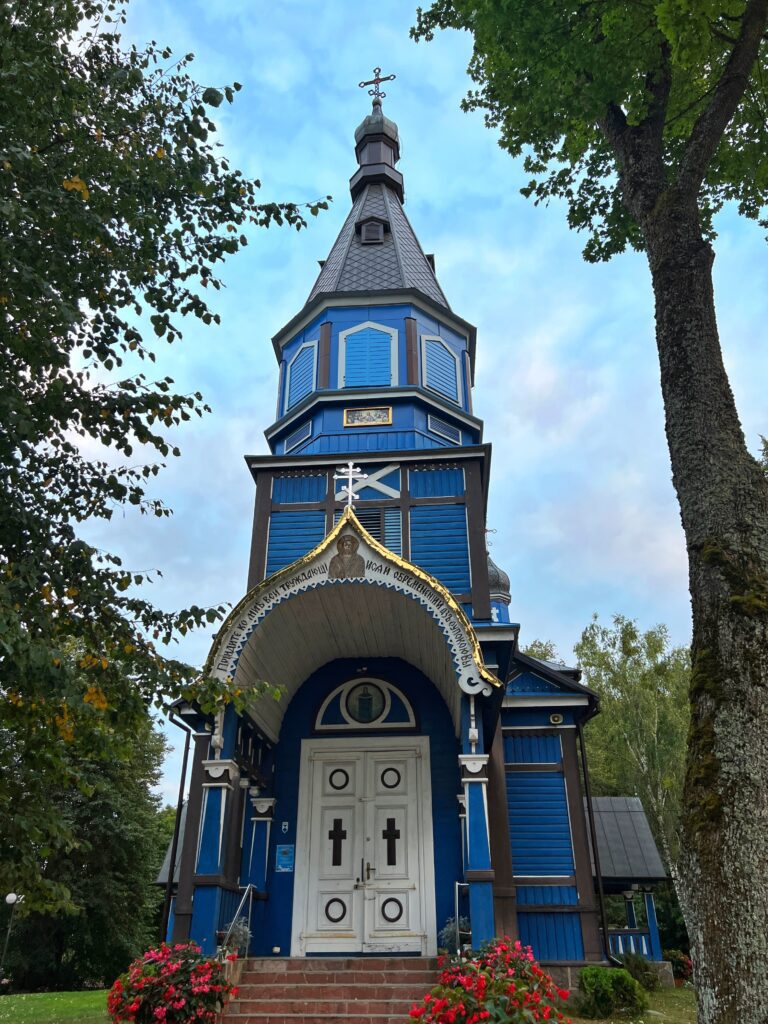
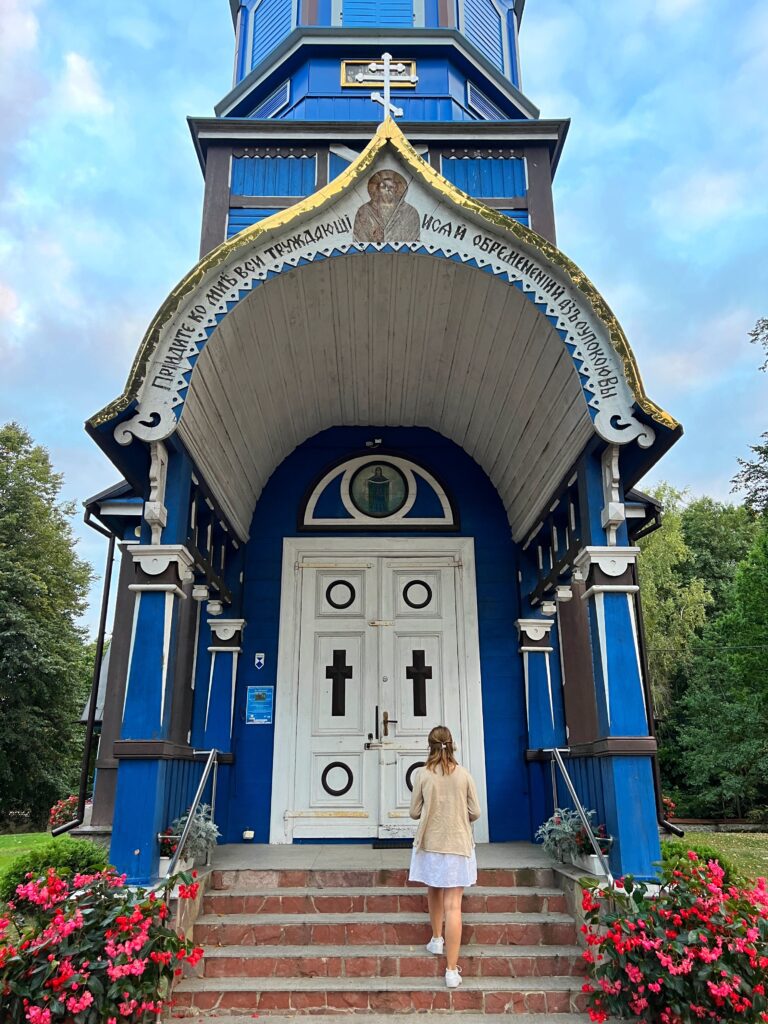


The Palace Park (Park Pałacowy) is one of Bialowieza’s most important attractions and a place that bears witness to the history shaping the area. The park was created in 1894 on the occasion of the planned visit of Tsar Alexander III. Additionally, a massive Tsar Palace with 134 rooms was built in the park. After the devastation of World War II, it was demolished by the Polish administration.
Alexander III appeared in Bialowieza only once, but his successor, Nicholas II, visited the forest six times. One of Nicholas II’s visits also necessitated construction of… a railway line from Hajnówka to Bialowieza and two railway stations – Bialowieza Towarowa and Bialowieza Pałac (close to Park Pałacowy).

The first train appeared at Bialowieza Palace station in 1897, which had Tsar Nicholas II and his family on board. You can feel like a tsar and step onto the former platform – there is a nice café here where you can enjoy tea made from Bialowieza herbs, among other things.
The nicest remnant from the Tsarist times is, in my opinion, the Governor’s Mansion (Dworek Gubernatora) from 1845 – the oldest building in Bialowieza. Some of its windows overlook the ponds connected by a causeway in the southern part of the Palace Park.

Locals told us that sometimes bison venture into the Palace Park – you might be able to see them if you move around the northern, quieter part of the park.
As soon as you leave the Palace Park, you will notice the St. Nicholas the Miracle Worker Orthodox Church (pol. cerkiew Mikołaja Cudotwórcy) from 1894 on the eastern side. Its construction was funded by Tsar Alexander III himself, who visited this place during his only visit to Białowieża. World War II was not lucky for the church – bombs fell on it as early as 1 September.
If you get hungry, check out what I think is the best restaurant in Bialowieza – Stoczek 1929. I opted for roe deer haunch on seasonal mushrooms, while Natalia tried roast duck with raspberry sauce and apple baked with lingonberry.
Cyclists have plenty to do around the Bialowieza Forest and the Bialowieza National Park. There are almost 500 kilometres of cycle routes in the area, and they not only lead through forests but also allow you to see Podlasie villages, feel the atmosphere of fields and meadows and reach interesting attractions of the area.
Staying overnight in Hajnówka, you can get to the Bialowieza Forest in just a few minutes. A cycle loop to Topiło and back leads from here. You have a marathon distance to cover (about 42 kilometres) – mostly through the primaeval forests and as many as four nature reserves.
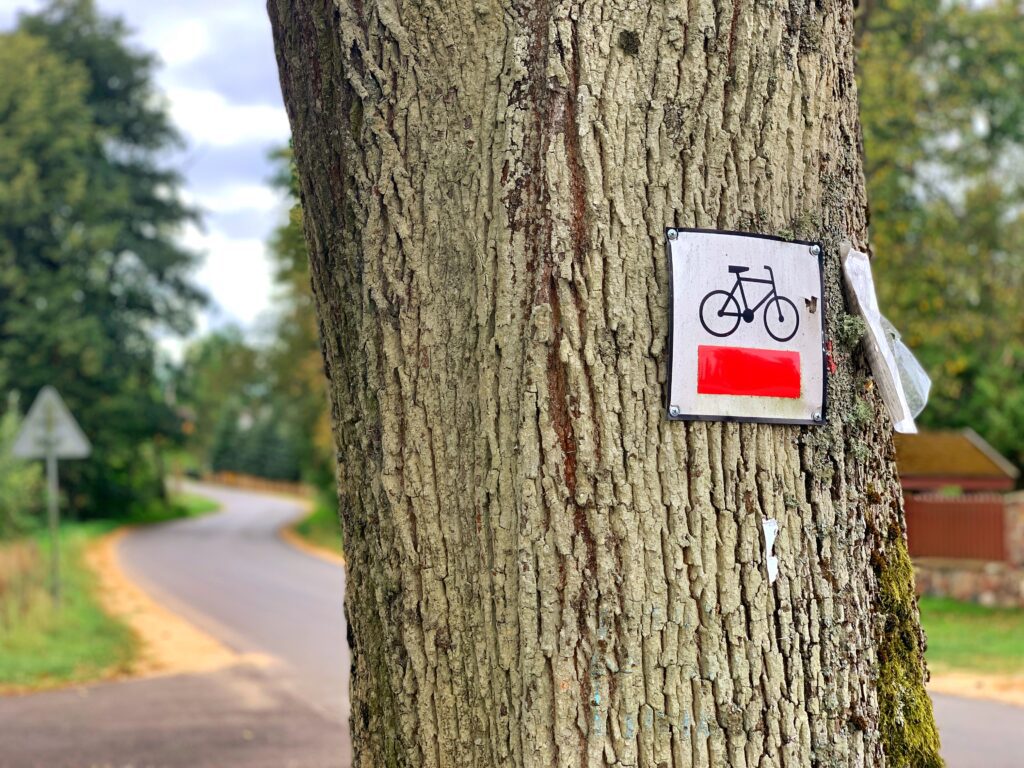
For short trips, I recommend either setting off without a big plan, exploring the beautiful surroundings, or using the ready-made cycle routes. The black trail around Białowieża and Polana Białowieska, or the blue trail “Do Puszczy Ladzkiej” (To the Ladzka Forest), which is less than 40 kilometres long, are suitable for quick trips.
The Bialowieza Cross-Border Trail (pol. Białowieski Szlak Transgraniczny) runs from Narew through Nowoberezowo, Hajnówka, Białowieża and Grudki up to the state border, where it continues. The long-distance Green Velo route also runs through the Hajnówka, which provides several service points for cyclists with resting places in the area.
The Siemianówka Reservoir is one of the largest artificial reservoirs in Poland. It was originally created to provide water for the nearby city of Bialystok (which didn’t work out, as blue-green algae bloomed too often in the reservoir), and its construction forced the removal of eight villages. Traces of five of them can still be found at the bottom of the reservoir.
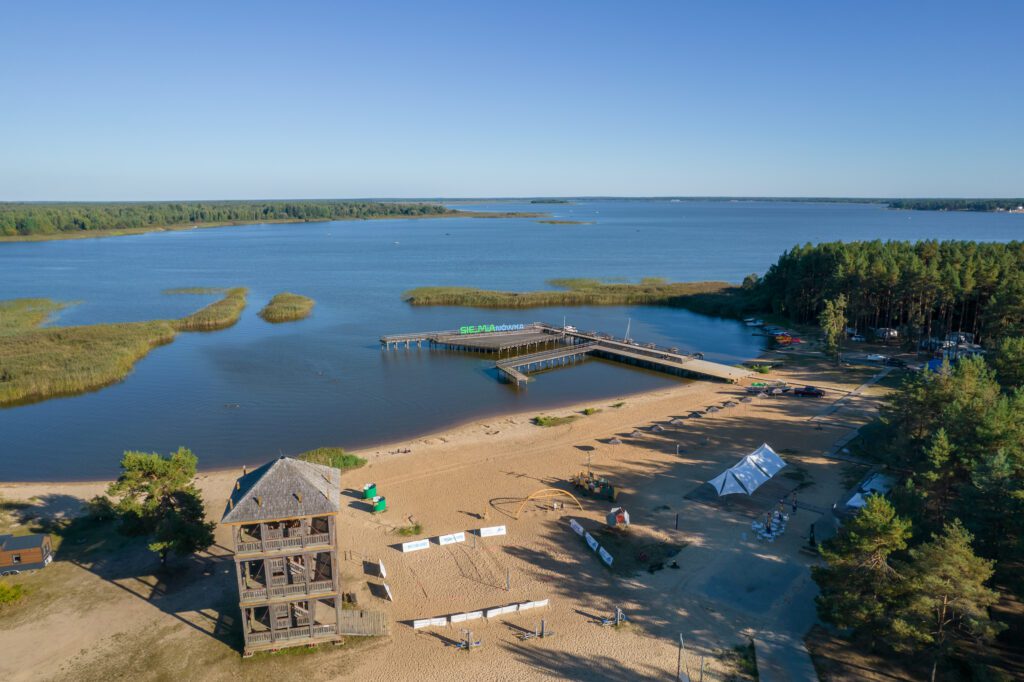
Thanks to the reservoir, you can quickly change the landscape and move from the forest to the water – trying windsurfing, kayaking, swimming, and sunbathing on the beach. Next to the beach, there is a small observation tower from where you can take a nice photo of the lake and its surroundings. Next to it stretches a clean beach with tourist facilities, a marina for boats and car parking.
The observation tower at the beach is a great place for birdwatching. The record for the number of species spotted in just one day is… 115. Can you imagine 115 different birds in one area? Most of us haven’t seen that many in our entire lives!

In 2005, scenes for ‘The Chronicles of Narnia’ were filmed at Siemianówka. The area is also conducive to campervan tourism – it’s possible to hook up to electricity here, get water and dump the grey water from the campervan. From Białowieża, you can drive here in a few dozen minutes along a road through the forest, passing the viewing tower in Pogorzelce and the entrance to the Royal Oaks Trail.
Instead of panoramas reaching for miles from the peaks, from the viewing towers around Bialowieza, you can count on good views of the close but varied natural surroundings. Some towers stand in places that are the most fertile parts of ecosystems, i.e. on the border of forests and meadows, overgrowing river valleys.
Some of the most beautiful views met us at the observation tower on the Carska Tropina path near Kosy Most. From the tower, which is quite high, you can see the Narewka River valley, its marshy surroundings and the forest border, where tourists sometimes spot European bison. We were not so lucky, but the views and the ever-present silence were soothing enough.
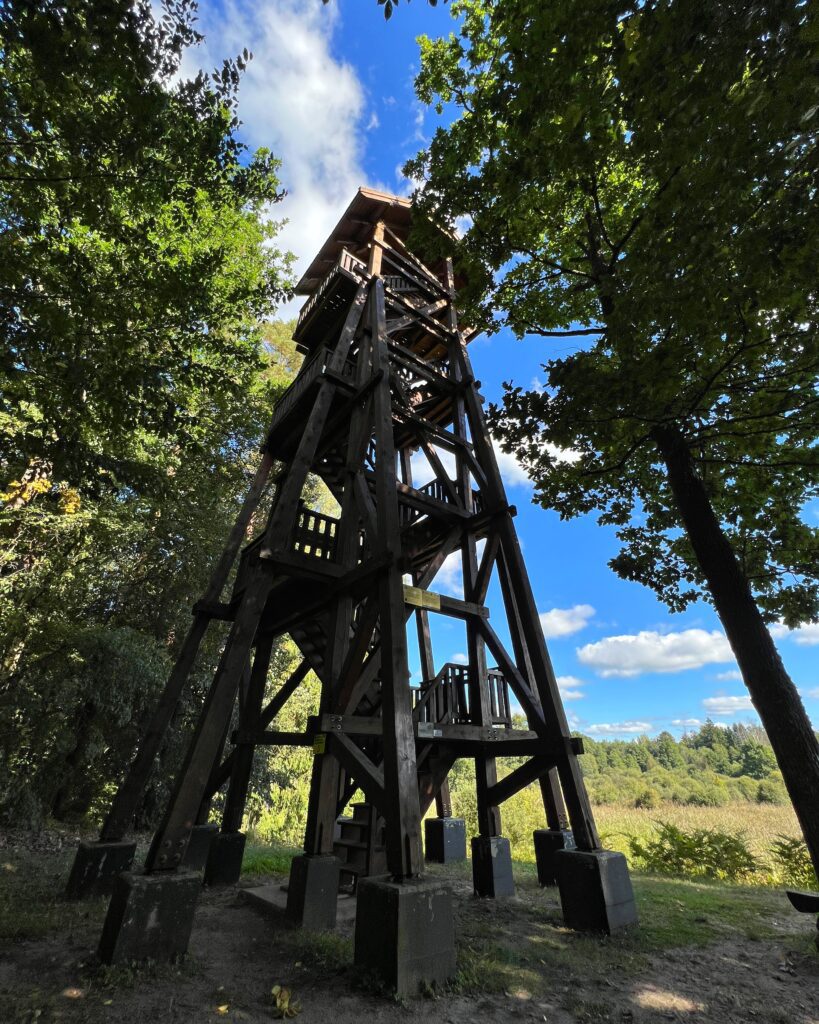
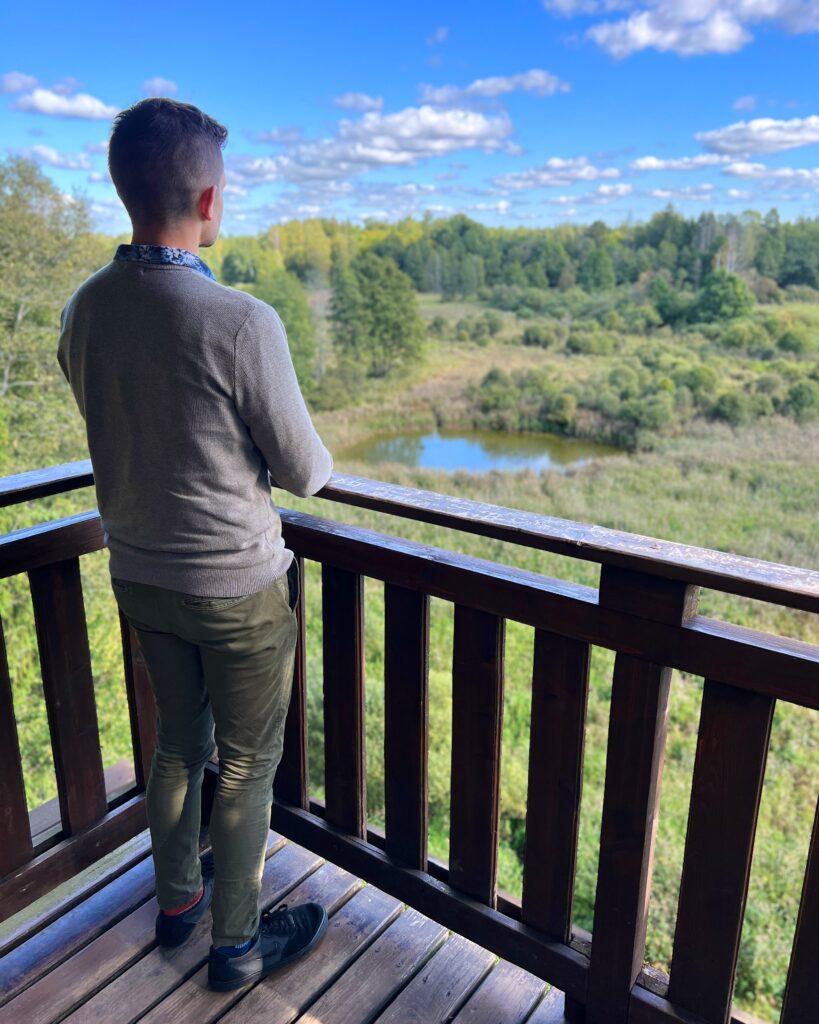
When you are at Kosy Most, walk a few dozen metres along the former narrow-gauge railway track and reach the railway bridge overlooking the valley of the Narewka River flowing downstream. You could also extend your walk by about 200 metres to reach a bison sanctuary (location on the map: 52.8027457, 23.827905586). It’s not certain that you will find them there, but they are frequent visitors in this glade. 😉
A few minutes from the entrance to the European bison’s rib path near Białowieża, there is a wooden tower in Pogorzelce. Entrance to it is free, and the view from it is a panorama of the Narewka River floodplains. To keep a good eye on the life of nature, it’s a good idea to take binoculars with you. It can be magical here during sunrise. Right next to the tower is a car park for several cars.

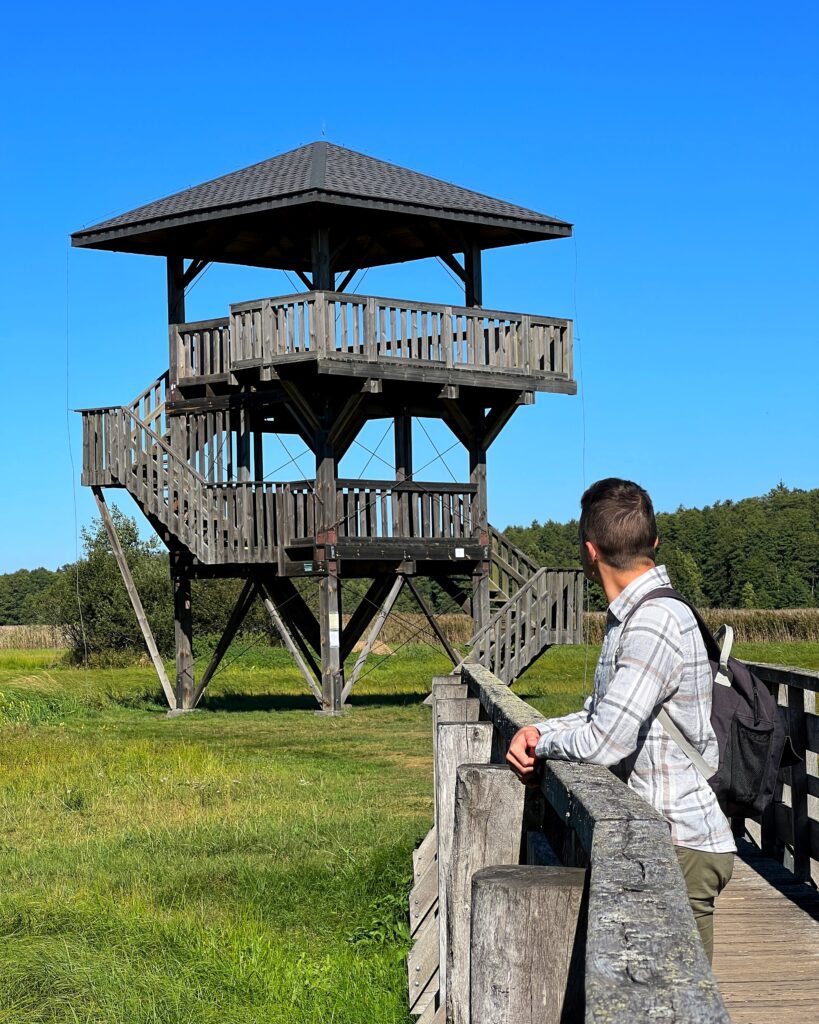

You’ll also find several small viewing towers in Białowieża by the Narewka River flowing peacefully here. One such tower stands a few steps from the Białowieża Towarowa railway station in location: 52.69059355, 23.879012207. The other tower stands a little closer to the centre of Białowieża, at the intersection of the Narewka River and Mostowa Street (location: 52.69515691, 23.863184658). From both, you will see idyllic Podlasie views of meadows, rivers and forests.
The small village of Przybudki probably didn’t expect the eyes of the whole of Europe to be on it. It boasted a beautiful Dunin oak tree – estimated to be 400 years old. What she didn’t expect, however, was that the tree would win almost 180,000 votes to become European Tree of the Year 2022.
Its girth exceeds 5 metres, and the trunk has an interesting structure – it is split in two, as lightning has struck the tree throughout history.
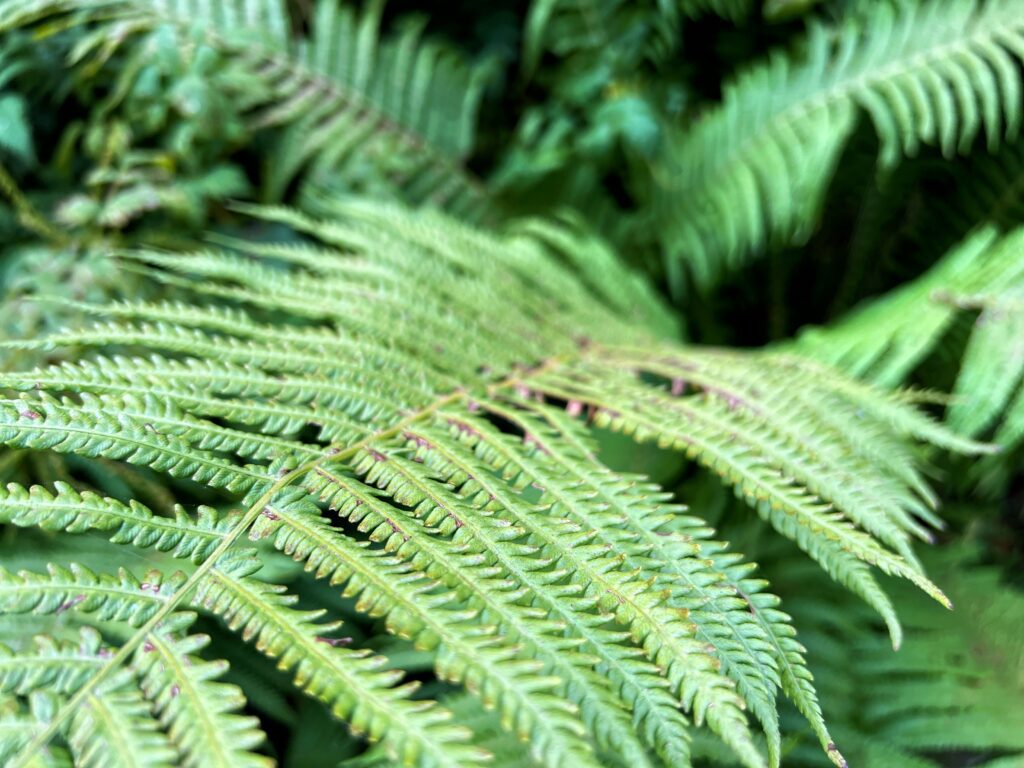
It is uncertain whether the tree will not eventually split in two. After the fame the oak gained after winning the competition, many specialists took an interest in it – so there is a chance through special treatments, it can be stabilised and helped to survive the next few years in good health.
The surroundings of the oak are just as interesting as the tree itself. Not far from the oak, you will find an apiary, which continues the bee-keeping culture traditions already dying out in Bialowieza.
I also recommend walking through the uniquely designed village of Przybudki – the buildings here are unusually arranged in the shape of the letter U, and both sides of the village are divided by a branch of the Krywczanka river.
The Bialowieza Forest is well explored by hiking and cycling. If you like to move around with Nordic walking poles, there are more than 150 km of specially designated trails in the area.
They are called “Land of the Forest and the Bison” (pol. Kraina Puszczy i Żubra), “Białowieża” and “Land of Good Winds” (pol. Kraina dobrych wiatrów). I found information boards along them with route descriptions and exercises to warm up before setting off.


The routes often lead through nature reserves and vary in length. The shortest ones – “Near Krynochka” (pol. W pobliżu Krynoczki), “Landscapes of Czerlonka” (pol. Krajobrazy Czerlonki) or “Around Sacharzew” (pol. Wokół Sacharzewa)- will take you through in 1.5-2 hours, but you can also choose routes that are more than 15 kilometres long and require at least 3-4 hours of walking.
I had not previously associated cross-country skiing in Poland with places other than mountains, but it turns out that the Białowieża Forest also has something to say here.
Bialowieza has its own 10-kilometre cross-country ski trail through the Palace Park, but with cross-country skiing you can also go on the hiking trails of the Bialowieza Forest. If there is at least 10-15 cm of snow on the trails, you should have a good time. 😉
Get ready for travel to Poland & Białowieża
1. Accommodation: book early & save money (stay in Hajnówka or Białowieża).
2. Currency exchange: you can use your bank card, but much cheaper is the free Curve card.
3. Rent a car in Białostok or Warsaw: you’ll be flexible & see more in less time.
4. Map of Mazury sights: explore better with a map of the best attractions on your phone.
I would suggest looking into agrotourism, traditional homestays and places that support slow tourism. However, if you prefer hotel standards, there are also several comfortable facilities in the area with facilities typical of a good hotel.
In the table below you will find the three most interesting, in my opinion, suggestions for accommodation in the Bialowieza Forest area that meet my requirements and criteria. We split our stay here between two places – Korolowa Chata in Nowoberezowo and Hotel Stoczek 1929 in Bialowieza.
Most tourists come to the Bialowieza Forest area by car, which is quite convenient thanks to the S8 expressway, which you can take to Bialystok. You will cover the last 60 kilometres to Hajnówka in about an hour, and the road to Bialowieza will take an additional 20-30 minutes.
Take your time, as there is a lot of wildlife in the forests – you certainly wouldn’t want to have any creature on your conscience. Besides, you don’t come to Bialowieza to rush anywhere.
You can also get to Hajnówka by train. There are passenger trains from Bialystok, Siedlce and Czeremcha and long-distance trains from Warsaw. Check the timetable on the Portal Pasażera.
The railway line from Hajnówka to Bialowieza remains closed, although efforts are underway to reintroduce trains in the future. You can get to Bialowieza by bus from Hajnówka – timetables are available on e-podroznik.pl.
You have just learnt about a long list of attractions and interesting places that I think are worth visiting during your visit to the Białowieża Forest and Białowieża. I have also tried to show you activities and new experiences you can try while in the area. Choose from a list of the most interesting places for you, book your accommodation in advance and… head for Bialowieza. Have a great visit!
BIAŁOWIEŻA FOREST IS FULL OF BEAUTIFUL GEMS
Looking for exciting places to see in the Białowieża Forest & National Park? Want to explore one of Poland’s most beautiful region?
Get a map of 110 places to see & things to do in Białowieża. Works on phone & computer (Google Maps).
Welcome to my travel blog!

Hi! I’m Bartek Dziwak – traveller & travel blogger with 10 years of travel experience.
Feel free to use a tons of information from this blog to make your travel better.
Practical Tips
Book your stay: check out hotels and hostels in a good location and book your stay before others take your place.
Exchange money cheaper: order a free Curve card to exchange money cheaper than in an exchange office and get £10 as a gift
Check My Travel Shop: check ready-made hiking routes and city attractions maps that will make your sightseeing easier.
Is my article helpful?
Help me keep making these travel articles for you by supporting me with a cup of coffee.
Check My Ebooks
Polish Mountains - MAP of Mountain Ranges & Peaks & Accommodation
BIAŁOWIEŻA NATIONAL PARK – MAP of 50+ Best Places to See
MAZURY & WARMIA (LAKES DISTRICT) – MAP of 200+ Best Places to See
Mountains of Lower Silesia (Poland) - 55 Best Hiking Routes
Prepare to Travel Abroad – Practical Tips
Exchange money cheaper: order a free Curve card to exchange money cheaper than in an exchange office and get £10 as a gift.
Book accommodation that suits you: check out hotels, hostels & apartments in a good location and book your stay before others take it.
Check My Travel Shop: check my ebooks with maps of cities & regions attractions and ready-made hiking routes that will make your sightseeing easier.
Is my article helpful to you? Help me keep making these travel articles for you by supporting me with a cup of coffee. I really love Aeropress!

Hi from the author! I’m Bartek Dziwak – traveller and founder of BartekOnTheGo.com travel blog.
I inspire people to travel around the world on their own and discover both famous and unusual places.
Check My Ebooks
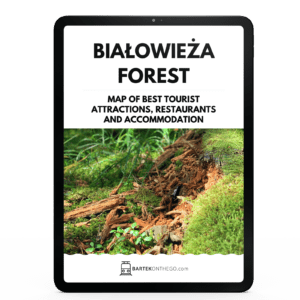
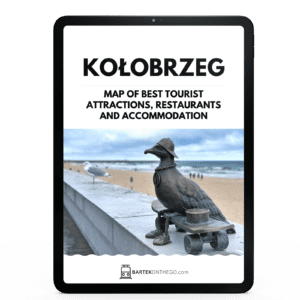
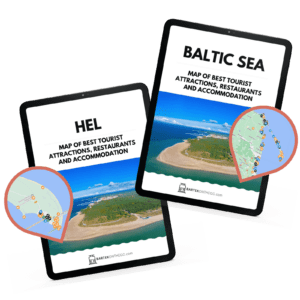
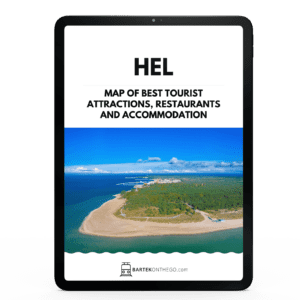
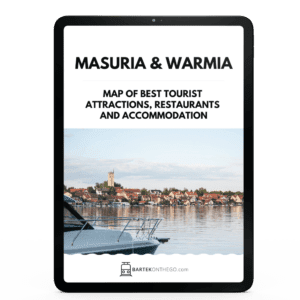

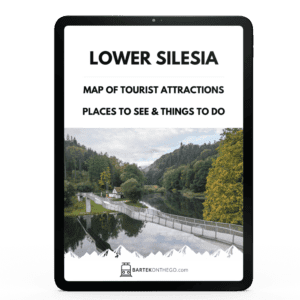
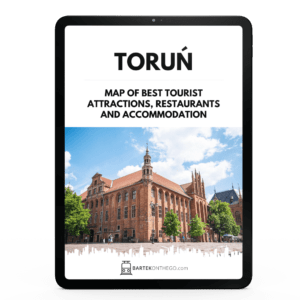
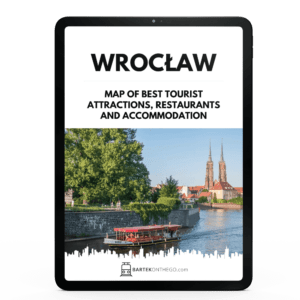
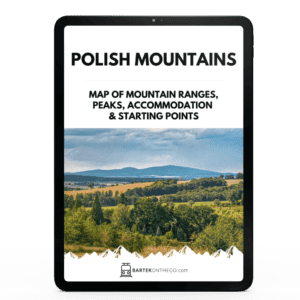


| Cookie | Duration | Description |
|---|---|---|
| cookielawinfo-checkbox-analytics | 11 months | This cookie is set by GDPR Cookie Consent plugin. The cookie is used to store the user consent for the cookies in the category "Analytics". |
| cookielawinfo-checkbox-functional | 11 months | The cookie is set by GDPR cookie consent to record the user consent for the cookies in the category "Functional". |
| cookielawinfo-checkbox-necessary | 11 months | This cookie is set by GDPR Cookie Consent plugin. The cookies is used to store the user consent for the cookies in the category "Necessary". |
| cookielawinfo-checkbox-others | 11 months | This cookie is set by GDPR Cookie Consent plugin. The cookie is used to store the user consent for the cookies in the category "Other. |
| cookielawinfo-checkbox-performance | 11 months | This cookie is set by GDPR Cookie Consent plugin. The cookie is used to store the user consent for the cookies in the category "Performance". |
| viewed_cookie_policy | 11 months | The cookie is set by the GDPR Cookie Consent plugin and is used to store whether or not user has consented to the use of cookies. It does not store any personal data. |